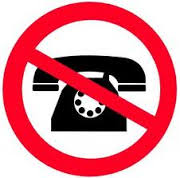 Recently, I checked my bank statement online to find two unauthorized and unexplained Uber charges. I hadn’t used the service in weeks, so I knew they couldn’t be valid. A couple days later, three more showed up.
Recently, I checked my bank statement online to find two unauthorized and unexplained Uber charges. I hadn’t used the service in weeks, so I knew they couldn’t be valid. A couple days later, three more showed up.
I went to the Uber website to find the customer service contact information, and I was surprised to find that email was the only option – no phone number is listed. I Googled “Uber customer service phone number” in hopes of getting around that, but when I called the number I heard this automated message before being automatically disconnected:
Thank you for calling Uber. More often than not, phone messages are incoherent and can slow down our ability to provide timely support. Please email support@uber.com with your issue, feedback or billing question and one of our community managers will respond in a timely manner. Thank you.
I was eventually able to resolve the issue over email (although it took a few days and lots of back and forth before a refund was issued), but the experience got me thinking: Is email-only customer service the wave of the future? If so, is that a bad thing for customers?
The Pros and Cons of Email Support
From a company’s perspective, I can understand why email-only customer service is an attractive option. There’s no expensive phone system infrastructure to buy, and customer service employees have only one channel in which to communicate, simplifying the process. It seems likely that email-only support requires far fewer agents, and thus costs far less.
However, we’re living in a world where customers want to communicate in the channel they prefer – whether that’s phone, email, social media or web chat. And different types of interactions lend themselves to different channels. For any situation where there’s a sense of immediacy, email is not ideal for the customer.
To be fair, my exchanges with Uber over email were all pleasant, and the response time was decent – usually within a few hours. But it did take five emails with two customer support people over several days to resolve the issue, and that was frustrating because I wanted a more immediate resolution. The first four responses did not include an offer for a refund, and I had to continue to write back and push for one. In the end, it felt like a 10-minute phone conversation could have resolved what ended up taking several days.
The Importance of a Multi-Channel Approach
Despite the benefits – from a company’s perspective – of email-only support, the approach isn’t an ideal way to deliver customer service. Modern customers expect to be in the driver’s seat, and they are frustrated when they cannot communicate in the channel they prefer. The same goes for when a customer tries to interact with a company via social media but is told to call or email instead.
Email is an important component of call center communication, no doubt. Some people – in some instances – prefer to communicate this way. But relying solely on email leaves customers without the options they crave.
Will people continue to use Uber despite this? Sure. The service has proved to be a reliable and far more convenient alternative to taxis. But the limited customer service doesn’t exactly send the message to Uber users that the company is doing everything it can to address their needs, concerns and questions.
We’re living in a world where multi-channel customer service has come to be expected. If a customer wants to chat via phone – which, by the way, some 80 percent still do – they expect phone support to be available. If they want to chat via social media, they expect a response on social media. And so on. Companies that want to excel in customer service need to communicate on the customer’s terms.
Kunnect sells 100% cloud-based call center software that includes a predictive dialer to businesses and political campaigns. Our software, hosted seamlessly in the Amazon platform, manages all inbound and outbound calling for a flat rate of $125 per agent per month with a flat deposit of $125 per user. There are no hidden fees.
